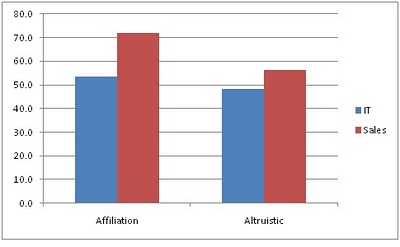Have you ever wondered why people fall in love? What drives that spark, the initial attraction, and the eventual relationship? Relationships have been in the news a lot this week. On Valentine’s Day, there were stories of couples trying to obtain the record for the longest kiss, how the Obamas keep romance alive in the White House, and whether employees give their “work spouse” a Valentine. The last of these headlines really caught my eye. An article by Eve Tahmincioglu on msnbc.com describes the work spouse as someone with whom you have camaraderie during the long work days. The article cites a number of examples of what this “spousal relationship” may look like, but in general a “work spouse” is someone you speak to when making a business decision, someone who buys the coffee creamer you both like so you can share, or maybe it’s the person to whom you vent during a difficult day.
After spending time thinking about this and taking a walk around the Hogan office to observe some of this camaraderie in action, I think MSNBC may be on to something. Considering the fact that we spend the majority of our waking hours in the work environment, it is important to find colleagues that we can connect with and an organization that we consider a home away from home. In fact a recent survey by OfficeMax found that approximately 50% of respondents admit to having this type of platonic connection in the workplace.
Although the idea of having these friendships in the workplace is appealing and intuitive, these relationships are probably more of a cultural phenomenon. Research has shown that individuals in certain industries tend to report these relationships more than others. Specifically, individuals in Human Resources, Sales, and Marketing are more likely to establish these workplace friendships than are Finance and IT professionals. What is it about these industries that drives the employees to seek out these connections in the workplace? The culture! For those of you who’ve spent some time in the areas of Human Resources and Marketing you will generally find a group of employees who are motivated by collaboration and establishing alliances with others to get things done. In Sales, developing relationships both internally and with clients is imperative for longevity and growth. In contrast, IT and Finance professionals are likely driven by analytical decision making and the bottom line over that of collaborative decision making and building a community within the organization.
When thinking about the key drivers for these industries in Hogan language, we are referring to the Motives, Values, Preferences Inventory (MVPI). The MVPI is an assessment that provides insight regarding one’s key motives and drivers. This assessment is often used in a selection context to determine if a candidate’s motives and drivers align with an organization. As a result, the MVPI is a powerful tool for predicting cultural fit and ultimately an employee’s satisfaction with an organization. For those individuals in IT and Finance roles, the need for analytical decision making and a focus on the bottom line is related to the MVPI Science and Commerce scales. In contrast, the Human Resources, Customer Service/Sales, and Marketing industries consist of employees who may have a need for collaboration, building a community, or a “work spouse.” These drivers are related to the MVPI Affiliation and Altruistic scales.
A recent review of IT and Sales professionals in the Hogan archive further supported this need for Affiliation and Altruism for individuals in Sales/Customer Service roles. In particular, it was found that Sales professionals have mean scores of 71.9% and 56.3 % on Affiliation and Altruistic, respectively. In contrast, IT professionals indicate a much lower need for collaboration and building a sense of community with mean percentile scores of 53.6% and 48.3%.
